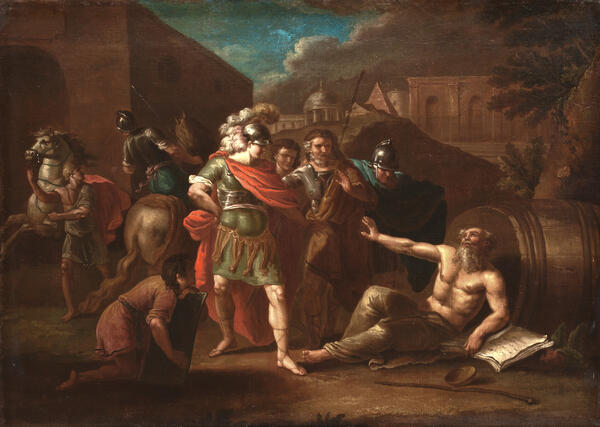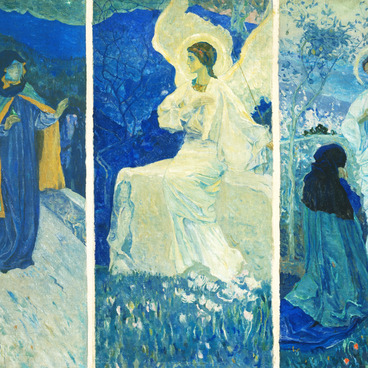Ivan Tupylev is one of the representatives of Russian classicism in the second half of the 18th century. He taught at the Academy of Arts and received the professor of history painting for many canvases, including the ‘Alexander the Great before Diogenes’ painting.
In the 18th century, the history genre was considered to be the main in Russian painting. It included works made on historical, ancient, mythological, and biblical themes.
Ivan Tupelev turned to Greek history here. The painting tells about the meeting of the commander Alexander the Great with the philosopher Diogenes. According to the legend, the meeting took place in Corinth — Alexander the Great went on a military campaign to India through Attica (south-eastern Greece) and wished to see the famous philosopher. Diogenes, who belonged to the Cynic school of philosophy, preached the rejection of earthly goods, independence, and self-sufficiency. The Cynics denied all authority of one man over another, proclaiming equality. On the contrary, Alexander the Great was a man of vanity and ambition who won brilliant victories and subordinated other states. Two people different in their worldview came into the conversation. At the end of the conversation, Alexander III of Macedon asked Diogenes: ‘Can I do something for you? ’ And he said, ‘Stand a little out of my sun.’ According to the records of historians, the commander was highly impressed by the dialogue with the philosopher. He stated: ‘If I were not Alexander the Great, I would like to be Diogenes’.
Working on the historical picture, Ivan Tupelyov paid great attention to detail, carefully painting the clothes and setting. According to classicism and historical genre requirements, the characters’ poses and gestures are very well readable and understandable, as on the theatrical stage. The third plan’s architectural back, the postures, and gestures of the characters Accordinground resembles the scenery and symbolizes the land conquered by Alexander the Great — Greece and Egypt.
You can see the philosopher’s attributes on the canvas — a barrel, books, a walking stick. However, Diogenes did not live in a barrel, but rather in pithos — a large clay vessel for storing wine, grain, or oil. They were quite large, often exceeding human height and allowed to hide from the sun or rain. Thus, Diogenes followed the school of cynics’ philosophy postulates: he sought to reduce dependence on civilization’s benefits and approach man’s natural state.



